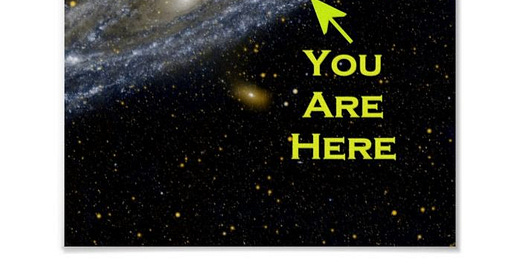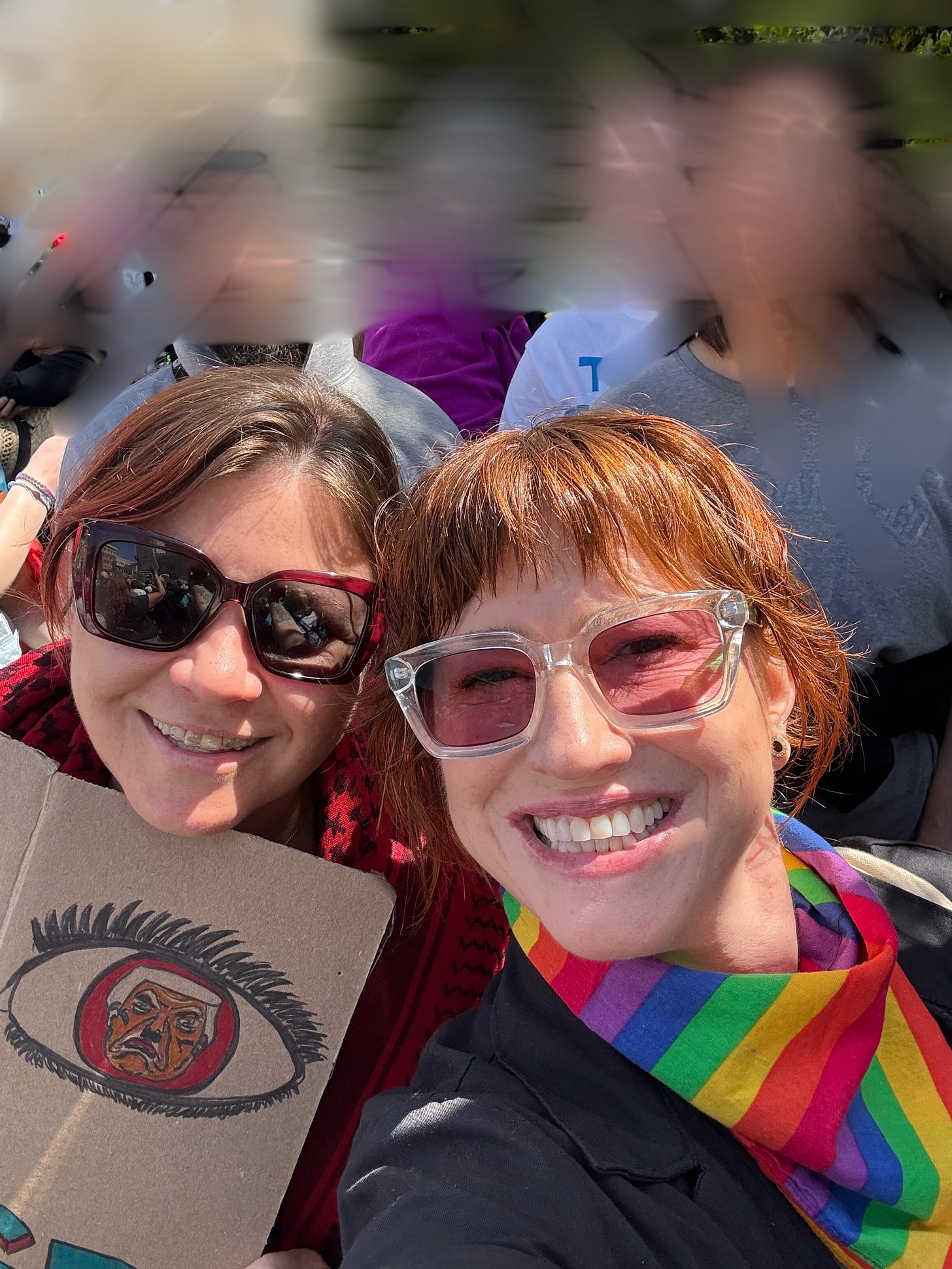My Queer Reflections on the Fine Art of Diagnosis Collecting, aka, ADHD? In This Economy??
On ADHD, gender-expansiveness, and the queer art of diagnosis collecting—because sometimes the right name isn’t just a label, it’s a map.
As I learn myself, I’m collecting diagnoses the way some queer folx collect rocks, patches, tote bags with ironic slogans, or enamel pins—scattered, glittering, oddly specific, and deeply personal. Some of my diagnoses, like enamel pins, are inherited, some are gifted by life and circumstance, some have been painstakingly hunted down after years of feeling like I was wandering around my own brain without an accurate map.
This week brings the addition of ADHD to my already quite-dense forest of neurocomplexity.
I should’ve seen it coming sooner. The clues were everywhere:
Three browser windows with 50+ open tabs each—at all times (minimum).
A lifelong commitment to and passion for starting projects that I absolutely will not finish.
My perpetual pursuit of falling, running, flying down rabbit holes that always lead to abundantly interesting, and ever off-topic, places.
The feral dopamine-seeking behavior of someone who once alphabetized their library instead of doing their taxes. (Or, I mean, case in point, wrote this article—lol!)
It’s fine. It’s all fine.
(Is it fine?)
It’s not that I want more diagnoses—it’s that every new one feels like a puzzle piece I didn’t know I was missing. For those of us raised queer, weird, and neurospicy in a world that didn’t have the language for it, or us? Diagnosis collecting is part of the story. It's not about labels for the sake of it—it’s about finding the right map. The one with the handy little “YOU ARE HERE” icon, and the well-marked trail. Proof of existence. A breadcrumb path back to ourselves.
The Queer Culture of Diagnosis Collecting
There are Venn diagrams that exist engulfing whole areas of being. My gut instinct is that the one existing between gender-expansiveness and neurocomplexity is, more-or-less, a circle. Many folx with autistic traits (not yet a diagnosis on my own list, but give me time!) also identify as gender diverse. Warrier et al. (2020) state that trans and gender-expansive folx are 3.03 to 6.36 more likely to be autistic than cisgender peers, and Walsh et al. (2018) “found broad elevation of most cognitive autism traits in the trans and non-binary group.”
And, according to their systematic review of relevant studies, Goetz and Adams (2022) found some studies reported incidence of ADHD in TGNC populations as high as 21% percent. In the same cited study, children diagnosed with ADHD were found to be gender variant at 4.8%. In another reviewed study, adults who were TGNC showed an ADHD rate of 11%, as opposed to 1.1% in that study’s general adult population. Studies also showed a higher incidence of ADHD with depression in TGNC adults, as well as higher occurrence of ADHD with depression and anxiety in TGNC adults.
Now, before you jump to some shitty, “See? All TGNC folx are fucked in the head!” outcome—it’s ok for us to joke, but not you. Got it?—let’s also look at the fact that multiple stressors may impact our ability to manage and/or mask, and, boy howdy, do we have a lot of stressors: we make less on average than our non-TGNC peers (I invite you to blame prejudice for that one), we’re more likely to experience SUDs (again, I invite you to blame to stressors, not being TGNC), and we have worse long-term health outcomes and lower life expectancy (likely due to the noxious mixture of stressors and prejudice).
It’s amazing that we’re walking, talking, resilient, creative, sometimes-brilliant members of society—mind you, a society that, by and large, has shown that it doesn’t want us. But we persevere.
Diagnoses offer us a refuge, a lexicon, a community shorthand, a sense of belonging. We (neurodivergently) compare diagnoses like a collection of treasured Pokemon cards, as we make new friends. We share our lists of “disorders” and the ways they manifest for us—not as a way to warn, but as a gentle way to invite one another in. We show our underbellies early on, as both a way to build, and test, trust.
And sometimes...the new diagnosis just feels better than the nebulosity of what existed before it; if we’re lucky we may even get a little dopamine hit as our neurology rearranges itself. ("Ah yes, another puzzle piece clicks into place!")
Complexity
While I jest fairly easily, it’s partially a defensive stance—as humor so often is. This is not really funny-funny at the base level. It’s layered and nuanced. Each new diagnosis impacts with an array of responses: Relief. Grief. Recognition. Exhaustion. I often find myself thinking, How did no one see this sooner? (Me. I am someone.) Over the years, as the diagnoses piled up, I have found myself pondering how much suffering may have been avoided by earlier diagnosis.
In the immediate aftermath of the fresh addition I become aware that I am annoyed at all the little things I have always done, that now signal a difference from the “standard” of how brain chemistry may work.
My hands are too busy. I fidget. I click pens. I scroll my phone as I try to pay attention to the words coming out of someone’s mouth. I chase an idea like a bone until I catch it, then I move on to the next—whether or not I have done the thing the idea was originally tied to.
So, to counter this negative spiraling, I begin taking inventory of the strengths and weaknesses I now see as part of this new diagnosis.
Hyperfocus has at times been a tool I wield well, and at other times a master that I can’t help but bow to.
Multitasking, aka “painting the fence,” is a lifestyle for me and has been forever.
Creative ways of thinking can aid problem solving.
My distractibility makes me nearly immune to the perils of the “lost cost fallacy.”
I have also begun formulating my Things That Have Worked™ list. On it so far are:
LISTS! Sometimes color-coded, but at the very least, prioritized.
Aggressive calendar hygiene and time-blocking.
The Franklin Covey Planner, two-page-per-day system. (Sorry, CHANI! Your planner is awesome, it just doesn’t have enough room or structure for my brain! My planner replacement order is already in. Maybe I will make them work together!)
Positive self-talk.
Good sleep. (Spotty at best, and reliant on impeccable sleep hygiene.)
Coworking/body-doubling.
Writing.
Asking for help.
And this is before researching, it’s just what I already know.
A Tender Truth
Diagnoses are not an end, they’re a beginning. A beginning to a new kind of problem solving, a new way of asking and answering. I’m honestly grateful for each one of my diagnoses, because they help me deepen my relationship with defining and centering the basic needs of my neurobiology. With each one, I become better at listening, at metering, at applying appropriate effort, at building my toolbox. Each one may weigh, at least incrementally, against the early-death-sentence of the stressors I have been handed.
Reflection
I don’t collect diagnoses because I think I am broken; I collect them because I’m mapping the shape of my survival. If you are facing the possibility of a diagnostic process, or a new outcome, I invite you to notice how it just may be a possible life improvement hack to have this new bit of information about yourself.
So, I’m living into a more resourceful frame around these bits of information that create a composite view: new diagnosis just dropped? Congratulations. Welcome to the club. We’ve been waiting for you.
Diagnoses don't fix us, but they find us. They help us recognize our patterns, honor our needs, and build systems of care. They help us find, and define, our edges—build in stop-gaps where needed, install braking systems and bumpers so that we don’t impact as easily, and when we do at least we’re insulated. They offer the language to create a solid problem, so that we can seek the correct solution.
Finally, they offer a doorway to community as they connect us to others walking a similar path.
Citations:
Warrier, Varun, David M. Greenberg, Elizabeth Weir, Clara Buckingham, Paula Smith, Meng-Chuan Lai, Carrie Allison, and Simon Baron-Cohen. 2020. “Elevated Rates of Autism, Other Neurodevelopmental and Psychiatric Diagnoses, and Autistic Traits in Transgender and Gender-diverse Individuals.” Nature Communications 11 (1). https://doi.org/10.1038/s41467-020-17794-1.
Walsh, Reubs J., Lydia Krabbendam, Jeroen Dewinter, and Sander Begeer. 2018. “Brief Report: Gender Identity Differences in Autistic Adults: Associations with Perceptual and Socio-cognitive Profiles.” Journal of Autism and Developmental Disorders 48 (12): 4070–78. https://doi.org/10.1007/s10803-018-3702-y.
Goetz, Teddy G., and Noah Adams. 2022. “The Transgender and Gender Diverse and Attention Deficit Hyperactivity Disorder Nexus: A Systematic Review.” Journal of Gay & Lesbian Mental Health 28 (1): 2–19. https://doi.org/10.1080/19359705.2022.2109119.








You have always spoken to me, but this piece has really spoken to me in a way where I recognize all of things in me that I have been squashing. With the exception of writing, I have never been a writer and yours- dear friend-is beautiful, real and raw. I did, however, attend a protest and then lay on the couch for the rest of the weekend to avoid finishing a work project I needed to finish this weekend. I guess I’ll try again tomorrow.
I love you. You are amazing. Beautifully written. :)